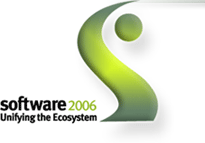Yet another “Pros and cons of Open source vis a vis SaaS for an SMB” post today. I feel this one barely scratches the surface, missing basic points like the availability or (mostly) lack of IT skills at a lot of SMB’s.
For reference on the subject I recommend Shop Talk: SaaS vs. open source – what SMBs should know by Paul Gillin and my own SaaS vs. Open Source for SMB’s? A No-Brainer.
Tags: SaaS, Open Source, SMB, SME, On-Demand







Recent Comments